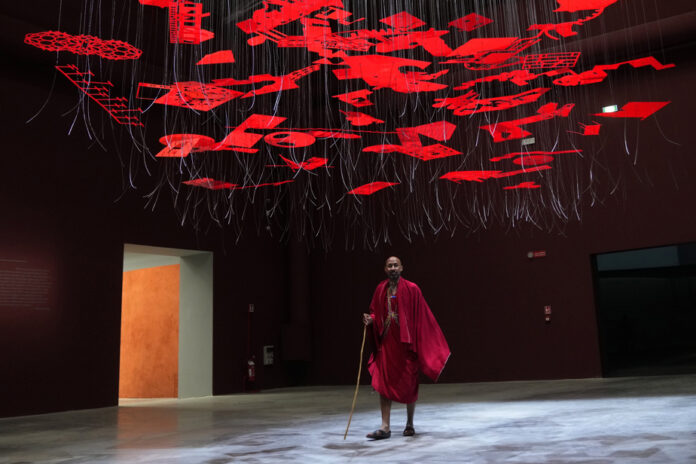The 18th Venice Biennale International Architecture Exhibition has just opened. Under the title The laboratory of the future, the gigantic exhibition turns for the first time in its history to the African continent. Another first: the exhibition is curated by Scottish-Ghanaian curator, architect, writer and educator Lesley Lokko.
This year, more than half of the 89 exhibitors are from Africa or the African diaspora, and the organizers claim to have scrupulously respected gender parity. Explaining this choice, Ms. Lokko says, “We often describe the word ‘culture’ as the sum total of the stories we tell ourselves about ourselves. In the realm of architecture, the story that has been told so far has largely focused on the past and Western experiences and ignored Africa. I think this is not a false story, but an incomplete one. »
The main exhibition of the Biennale, which promises to be an ode to decolonization and decarbonization, presents as many ideas as buildings or artifacts. For example, there is a film by photographer Sammy Baloji, whose contemplative landscape images show the results of Belgian colonization in the Democratic Republic of the Congo. Another video shows us a fascinating investigation by architect Alison Killing on the detention camps of Uyghurs, built by the Chinese government in Xinjiang. A little further on, a series of models presented by the architect Andrés Jaque tells how the extraction of minerals and raw materials used in contemporary architecture contributes to racial segregation.
The Venice Biennale has 64 national representations this year. 27 of them, including Canada, are located in the permanent pavilions in the Giardini (the gardens of the Biennale) and 23 in the former arsenal of Venice, a magnificent industrial building converted into exhibition spaces. Fourteen more are scattered in various spaces across the city, including disused palaces and churches.
The Canada Pavilion is home to the collective Architects Against Housing Alienation, formed in 2021 and made up of six members, architects, artists and professors from the universities of Toronto and British Columbia.
The Not For Sale! / Not for Sale!, selected by a jury set up by the Canada Council for the Arts, tackles the housing crisis by opposing the idea of housing as a profit machine and a means of speculation .
Visitors are greeted by a huge photograph of makeshift camps that literally envelops the pavilion. Once inside, we find the result of the work of ten pan-Canadian teams who were invited to develop architectural projects offering possible and original responses to a specific housing demand.
The project led by the team of Montreal architects Big City imagines an architectural complex on Berri Street, which would occupy the south of the Voyageur block, left vacant by the construction of the new bus terminal. Echoing the presence of the Grande Bibliothèque, the project combines a literary program with literacy programs and social housing, particularly for newly arrived immigrants, in order to promote social integration.
At the Canadian pavilion, the collective Architects Against Housing Alienation goes so far as to formulate a political manifesto including demands for the restitution of ancestral lands, the establishment of a tax on gentrification and a policy of supportive housing. Extremely concrete, Canada’s proposal therefore raises real questions, but it clashes a little with the more artistic, conceptual and refined installations of other countries.
The Venice Biennale is sometimes compared to the Olympic Games of Arts and Architecture. Brazil won the Golden Lion for Best National Representation this year. Terra [Earth], the Brazilian exhibition, challenges the idealized and racialized view of “tropical nature” that has shaped the representation of Brazilian national identity. The magnificent concrete pavilion, built in 1964 by Venetian architect Amerigo Marchesin, was this year filled with earth and features a series of works that highlight the artistic heritage of the indigenous and Afro-Brazilian populations.
Throughout its long history, the Biennale has often served as a backdrop for ideological and diplomatic battles of all kinds. This year, a few days before the opening of the Venetian exhibition, the Italian government prevented three Ghanaian curators from entering Italy to participate in the Biennale. This refusal caused a lot of ink to flow. However, if more than half of the exhibitors of the Biennale are of African origin, the fact remains that many of them are British, European or American citizens. We are therefore a long way from a Biennial truly focused on the African continent, whose national representation at the Biennial is in fact limited to two countries: Niger and South Africa.















